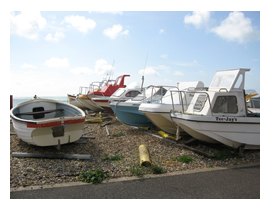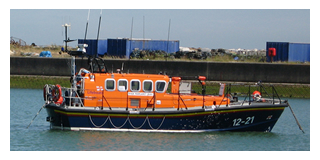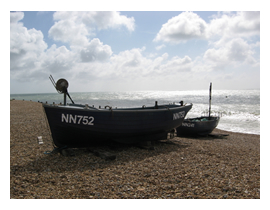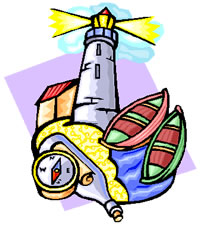As an island nation, the sea has played a major part in the history of the United Kingdom. From coastal fishing to defending the shores from invasion or smugglers, launching exploratory expeditions or as part of worldwide trade and the expansion of its Empire, there is a huge variety of occupations associated with the sea. Some of the more common occupations are described here together with advice on how to research your seafaring ancestors and the sort of life they led.
SEAFARERS

Sailors
The term sailor is commonly used to describe any man who went to sea, whether in the Royal Navy, Merchant Navy, Coastguards, Lifeboat Service, fishing fleet or as a pilot, privateer or a single boatman. If a man went to sea he was a sailor.
MARINERS
The term mariner can be synonymous with sailor but is more likely to mean that the man was concerned with the navigation of the vessel. Master mariners were those skilled in navigation. A Master Mariner would probably have a Mate or Master’s ticket and be on the Seaman’s Register at the National Archives. Mariners would come under the umbrella heading of the Merchant Navy.
The main source for tracing details of merchant seamen and shipping, especially from the 18th century onwards, are the archives of the Registry of Shipping and Seamen (RSS). These records are held in a number of places. Some are with the RSS in Cardiff, some with the National Maritime Museum at Greenwich and National Archives of Scotland and Ireland. However, the majority are held in The National Archives in Kew. These records are broken down into categories and an explanation of how these can be viewed can be found on The National Archives.
Organised service records do not commence until 1835 when The Merchant Shipping Act of that year required masters of all ships to file Agreements and Crew Lists with the Registrar General of Shipping and Seamen.
For those researching mariner ancestors who are experiencing difficulty locating them on the England and Wales census, Seamen on British Censuses contains a good explanation of the requirements regarding enumeration and may assist in helping you to locate those missing people!
The National Maritime Museum ~ Maritime Memorials is another good source of information for those researching this field.
Lifeboat Service

The Royal National Lifeboat Institution is a charity and lifeboats are manned by volunteers.
The RNLI grew out of the loose groups of salvagers which could be found in most ports.
When vessels were in trouble at sea salvers, often sailors or fishermen, would go to the rescue and claim salvage rights of the vessel and its cargo.
Many local branches of the RNLI have records of volunteers and rescues but do make a charge for searches. Some records can also be found in County Record Offices and local newspaper archives are another useful source.
HM Coastguard
The Coastguard began as Customs Officers whose job was to apprehend smugglers trying to import goods without paying duty. As early as the 17th century there were small fleets of customs boats patrolling local waters in an effort to prevent smuggling.
A detailed history of HM Coastguard and Records can be found at the National Archives ~ Coastguard and in County Record Offices.
Fishermen

Deep sea fishing was the most dangerous occupation of the 19th Century and is still high on the list today. Men signed on at a fixed rate per voyage or for a share of the catch.
The fishing fleet was part of the Merchant Navy. Coastal County Record Offices sometimes house extensive collections of information about the fishing fleets based in their ports.
Details of these are most likely to be found may be found on individual County Record Office websites.
Privateers
Privateers, common from the 16th to 19th centuries, were privately owned warships granted a licence by the government to attack enemy ships during times of war. Investors sponsored these ships for a share of any booty captured from enemy ships. Some privateers attacked and looted neutral vessels or raided foreign ships in times of peace and thus became pirates.
Sometimes County Record Offices will have accounts of voyages made by privateers based in their home ports.
THE NAVAL SERVICE
The Royal Navy

Vikings, Romans and Norman invaders arrived by sea and settled in the country. Although each ruler had fleets of vessels, some more successful than others in repelling these invaders, it was not until Henry VIII created his Navy Royal, which by his death in 1547 numbered 58 vessels, that it was centrally organised. In 1546 a “Council of the Marine” which later became the “Navy Board” was established.
By 1660 when Charles II came to the throne, the fleet numbered 154 ships and became a permanent professional fighting force – The Royal Navy. By 1805, there were almost 950 vessels and between 12,000 to 20,0000 seamen were needed even in peacetime. At the height of the Napoleonic Wars 150, 0000 seaman were needed which resulted in the infamous Press Gangs.
As well as fighting, the Royal Navy carried out more peaceful tasks such as scientific and geographical surveying. Captain James Cook, among others, undertook long voyages which became longer as the health on board ships improved. Civilian scientists and artists would also be taken on these expeditions.
As well as the surface fleet and also part of the Naval Service, there are the Submarine Servicewhich dates from 1901 and the Fleet Air Arm which was established in 1914.

The Royal Navy officlally began to employ women as carers of servicemen, especially as nurses in 1883 although women would have been on board ship unofficially before this. The Women’s Royal Naval Serivce (WRNS) was established in 1920.
The Royal Marines are the Royal Navy’s amphibious infantry. In 1664 1200 soldiers were recruited for service in the Fleet. They were not only soldiers but also seamen.
The Royal Fleet Auxiliary is a civilian manned organisation owned and tasked by the Ministry of Defence. It exists to support the Royal Navy by supplying food, fuel and other stores allowing them to stay at sea for longer. It came into being in 1905.
Research guides are available from the National Archives.
TRINITY PILOTS

All ports need sea pilots to guide vessels safely through local hazards and into harbour. Historically these used to be local men who knew the seas around their home ports. Pilots were also needed on large navigable rivers. Samuel Pepys had concerns about the quality of Port of London Pilots and was given permission to devise a test and the Pilots were brought under the aegis of Trinity House.
Trinity Pilots were licensed by the Corporation of Trinity House. When a Pilot applied to be licensed, he had to have British nationality, have several years’ experience as a watch-keeping officer of a ship, hold a foreign-going Master Mariner’s certificate (or Naval Certificate of Service) and be under 35 years of age.
Records are held at The Guildhall Library, although these suffered from fire in 1666 and 1714 and from bombing in 1940. Some court minutes survive from 1660, but the majority of other records in the series are only present from the 19th century. Staff employed at the Guildhall Library are unable to undertake personal searches. The functions of Trinity House, as well as surviving records and how to access them is explained on the website at Guildhall Library Manuscipts Section – Trinity House Family History Sources.
Qualified pilots could claim a set fee so unofficial local pilots continued to thrive up until the 20th Century. In Lowestoft, for example, these men were know as Brumigen Pilots. Registers of Pilots can usually be found in County Record Offices.
MARITIME RESOURCES
National Archives: Research Guides
Family Tree Forum’s Reference Library ~ Maritime Resources
National Maritime Museum: Greenwich
Merseyside Maritime Museum
National Maritime Museum: Cornwall
The Ships List
John’s Nautical Links List ~ Enormous collection of varied maritime links.
FURTHER READING
The Plimsoll Sensation: The Great Campaign to Save Lives at Sea by Nicolette Jones
ISBN – 978-0316726122
[